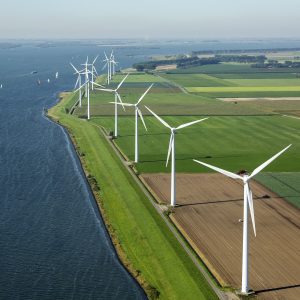
John Tatham provides more detail on the recently launched Greater Manchester Low Carbon Fund and the potential opportunities it brings for Greater Manchester to reduce its carbon footprint.
The Greater Manchester Combined Authority has a target of reducing Manchester’s carbon footprint and to cut emissions to at least 48% of the levels generated in the 1990s by 2020. To do this, the Combined Authority has a wide range of programmes to help businesses, residents and the public sector become more energy-efficient.
One element of this toolkit is the new Greater Manchester Low Carbon Fund managed by GVA. The Fund has been established to provide loan capital to unlock infrastructure projects that contribute to a reduction in greenhouse gas emissions. With £15m from the 2014-2020 European Regional Development Fund to invest and recycle over 15 years, the Fund will be a long-term participant on the scene in Manchester.
GVA is looking at a wide range of projects including solar farms, wind turbines, projects generating energy from waste and landfill, Biomass Combined Heat and Power (CHP) systems that generate electricity and heat powered by renewable woodchips and electric vehicle charging infrastructure across major car parking portfolios.
Using public money to invest as a loan rather than provide as grant is still a relatively new concept and the rules around what can and cannot be funded and how investments can be made are still evolving. A number of investment programmes have tended to borrow rules from the grant regime and bend them to meet an investment.

Beyond financial returns
The approach GVA is taking to managing the Low Carbon Fund is to create a best of both worlds situation — loan funding that looks beyond financial returns and is shaped to match the needs of the project rather than the investor or bank.
In the infrastructure sector, and in particular where new technologies are being adopted, the challenge is availability of finance and keeping the cost of investment down to a manageable level. The inherent uncertainty over projects which enable lender exit through cash generated by user take up can make investment hard to access at affordable levels and on reasonable terms. For example, demand for heat and power from a new industrial estate is a function of take up of space and the type of occupiers that operate their businesses from the site. This results in uncertain cash flows to finance and repay the investment in the initial CHP infrastructure.
New investors are often cautious about entering the sector for the first time, so capital can be limited. Add to this a new or emerging technology and finding the right source of capital becomes difficult and expensive.
The approach in managing the Greater Manchester Low Carbon Fund is to regard its investment as ‘patient’ loan funding. There is a temptation to refer to ‘soft loans’ in the public investment sector but this terminology is not helpful. However ‘soft’ a loan is, there is still the requirement to service the cost of investment and repay the debt — otherwise it’s just a dressed up grant.

Unlocking projects
GVA will look at the project and work with the sponsor to understand where the funding pressures are and how the patient capital can unlock the project, whilst creating a return and protecting the investment. GVA’s mandate includes the desire from the Combined Authority to support emerging technologies as much as tried and tested technology — ensuring that we are contributing not just to the delivery of low carbon infrastructure but also innovation within the sector. The anticipated return is a balance — there is a need to cover the cost of the investment but also a desire to reduce greenhouse gas emissions over the region in the immediate and long-term, so there is a double bottom line. This provides flexibility that GVA can take both into account when finalising the case for investment.
There are no standard terms to Low Carbon Fund loans — GVA wants the terms to be an output from collaboration between sponsor and the Fund to reflect the specifics of each project we invest in. They can take a wider view on things like term of the loan so that it flexes to allow for variation in demand for the infrastructure developed and they can look at wider sources of security to keep the cost of investment down.
In some cases, where there is a viability gap GVA can help the project to access grant from other programmes across the Greater Manchester area. Similarly there is a programme of support relating to feasibility and commercialisation for CHP technology across the sub-region. This creates a powerful funding package — investment to deliver the project with the right amount of grant funding to unlock the opportunity to improve the region’s environmental performance.








